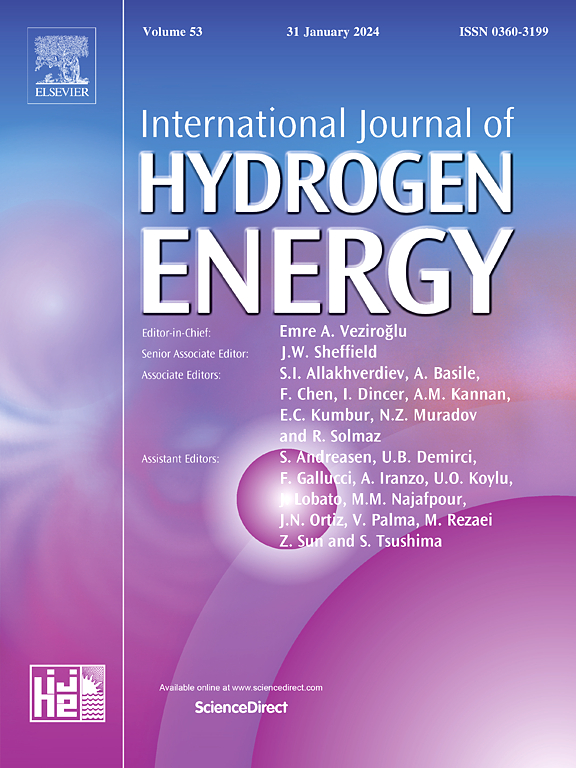First-principles study on the hydrogen embrittlement resistance of CoCrFeMnNi high-entropy alloys
IF 8.1
2区 工程技术
Q1 CHEMISTRY, PHYSICAL
引用次数: 0
Abstract
This study used first-principles calculations to investigate the dissolution and diffusion behavior of hydrogen in the CoCrFeMnNi high-entropy alloy, aiming to provide theoretical guidance for designing novel multi-principal element alloys with excellent hydrogen embrittlement resistance. The results suggest that hydrogen's average dissolution energy and volumetric expansion rate in the octahedral interstitials are lower than those in the tetrahedral interstitials, indicating that hydrogen prefers to occupy octahedral interstitials. Compared with the ideal octahedral interstitial, lower dissolution energy, and higher diffusion barrier were observed in the octahedral interstitials enriched with Cr and Co. Furthermore, the presence of hydrogen reduces the formation energy of vacancies, which act as hydrogen traps to capture H and provide additional diffusion channels to lower the diffusion barrier. Therefore, increasing the content of Cr and Co can effectively reduce the diffusion coefficient of hydrogen. In contrast, Fe, Mn, and Ni content has a relatively minor impact on the diffusion coefficient. These results provide a new perspective for understanding and developing novel multi-principal element alloys with excellent hydrogen embrittlement resistance.

CoCrFeMnNi高熵合金抗氢脆第一性原理研究
本研究采用第一性原理计算研究了氢在CoCrFeMnNi高熵合金中的溶解和扩散行为,旨在为设计具有优异抗氢脆性能的新型多主元素合金提供理论指导。结果表明,氢在八面体间隙中的平均溶解能和体积膨胀率比在四面体间隙中的低,表明氢更倾向于占据八面体间隙。与理想的八面体间隙相比,富Cr和Co的八面体间隙的溶解能更低,扩散势垒更高。此外,氢的存在降低了空位的形成能,空位充当氢捕获氢的陷阱,并提供了额外的扩散通道,以降低扩散势垒。因此,增加Cr和Co的含量可以有效降低氢的扩散系数。Fe、Mn、Ni含量对扩散系数的影响相对较小。这些结果为认识和开发新型抗氢脆多主元素合金提供了新的视角。
本文章由计算机程序翻译,如有差异,请以英文原文为准。
求助全文
约1分钟内获得全文
求助全文
来源期刊

International Journal of Hydrogen Energy
工程技术-环境科学
CiteScore
13.50
自引率
25.00%
发文量
3502
审稿时长
60 days
期刊介绍:
The objective of the International Journal of Hydrogen Energy is to facilitate the exchange of new ideas, technological advancements, and research findings in the field of Hydrogen Energy among scientists and engineers worldwide. This journal showcases original research, both analytical and experimental, covering various aspects of Hydrogen Energy. These include production, storage, transmission, utilization, enabling technologies, environmental impact, economic considerations, and global perspectives on hydrogen and its carriers such as NH3, CH4, alcohols, etc.
The utilization aspect encompasses various methods such as thermochemical (combustion), photochemical, electrochemical (fuel cells), and nuclear conversion of hydrogen, hydrogen isotopes, and hydrogen carriers into thermal, mechanical, and electrical energies. The applications of these energies can be found in transportation (including aerospace), industrial, commercial, and residential sectors.
 求助内容:
求助内容: 应助结果提醒方式:
应助结果提醒方式:


